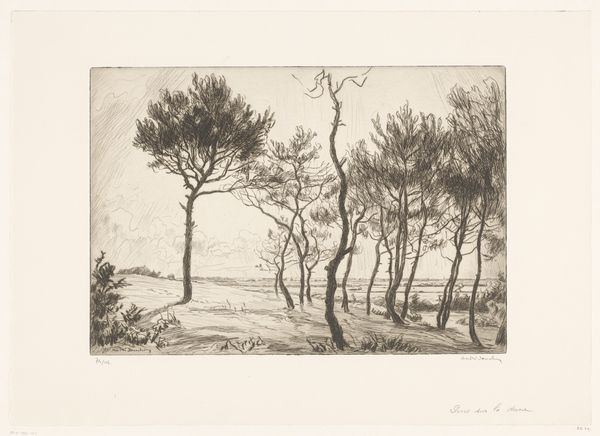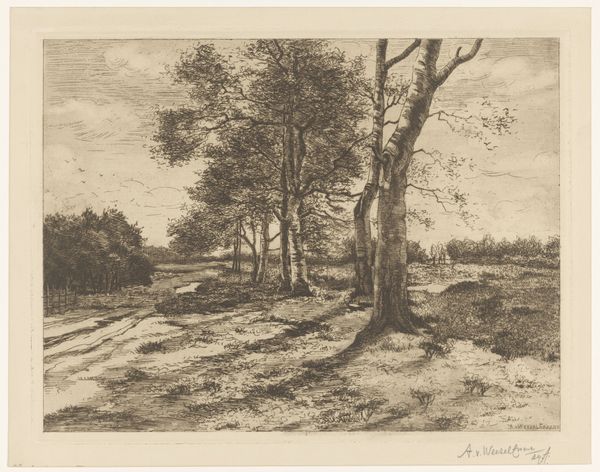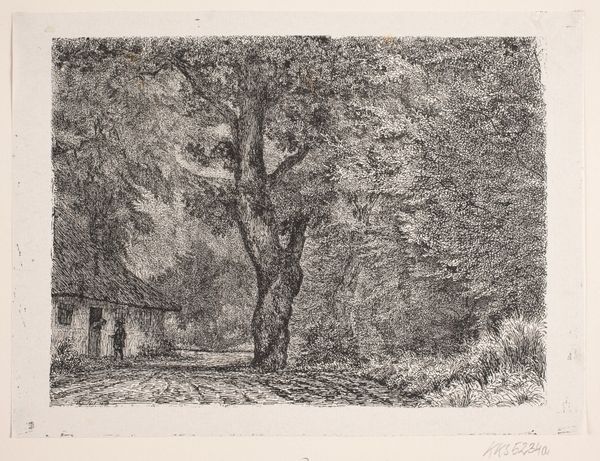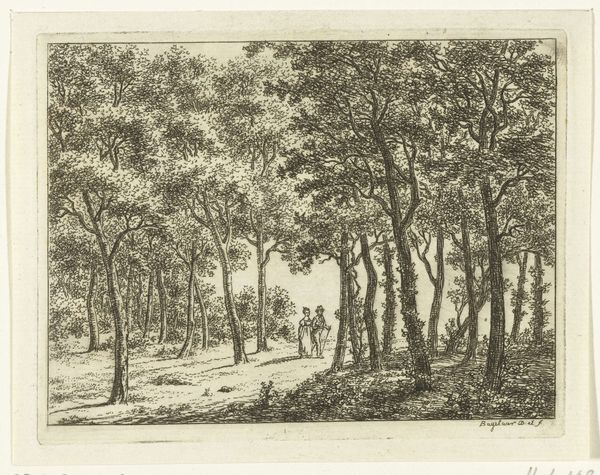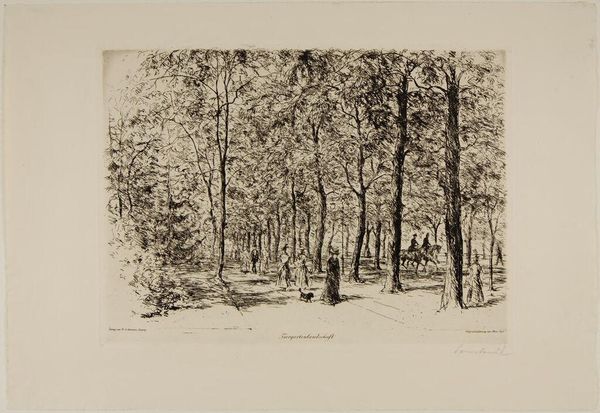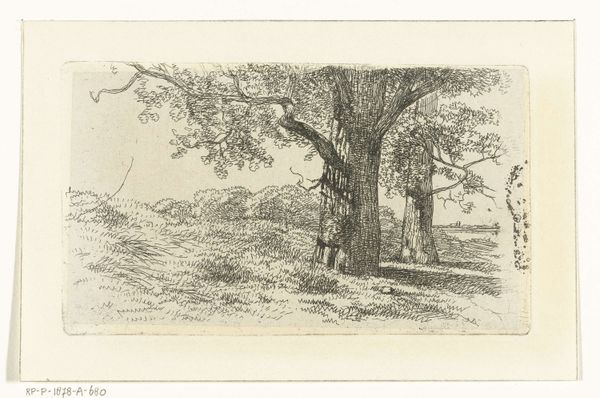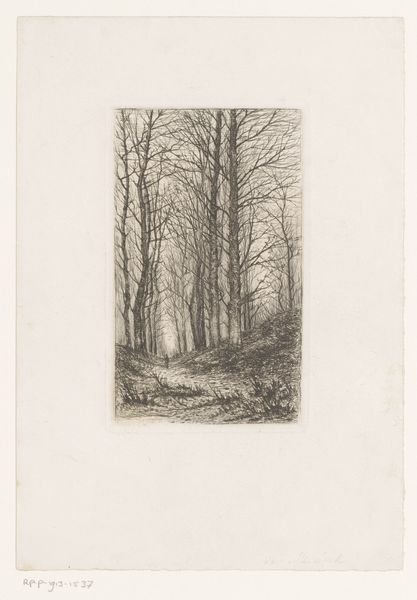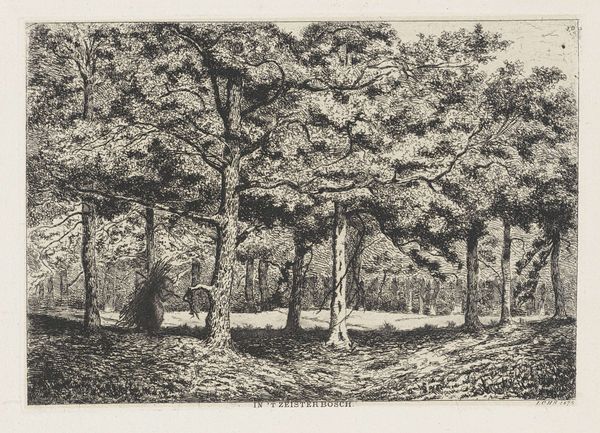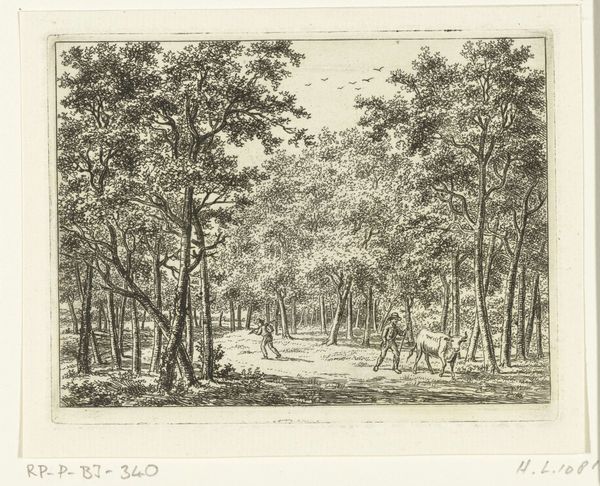
drawing, pencil
#
landscape illustration sketch
#
drawing
#
pen illustration
#
pen sketch
#
pencil sketch
#
landscape
#
botanical illustration
#
romanticism
#
pen-ink sketch
#
pencil
#
botanical drawing
#
pen work
#
pencil art
#
botanical art
Dimensions: height 147 mm, width 166 mm
Copyright: Rijks Museum: Open Domain
Ernst Willem Jan Bagelaar created this print, titled "Open Place in the Woods," in the Netherlands, sometime in the late 18th or early 19th century. This was a period of political and social upheaval, with the Dutch Republic falling to French revolutionary forces and later becoming part of the Napoleonic empire. Looking at this image, we see a detailed depiction of a forest clearing, rendered with a close attention to the play of light and shadow. The naturalism of the scene aligns with the broader artistic trends of the time, as artists turned away from the idealized landscapes of the past and focused on direct observation of the natural world. But beyond its aesthetic qualities, this print also reflects a changing relationship between people and the land. As the Netherlands became more urbanized and industrialized, the countryside took on new cultural meanings, becoming a site of leisure, recreation, and national identity. Prints like this one helped to popularize these new ways of seeing and valuing the natural world. To fully understand the artwork, we might consult contemporary travel guides, landscape painting manuals, and other sources to gain insights into the cultural meanings of landscape in this period.
Comments
No comments
Be the first to comment and join the conversation on the ultimate creative platform.




